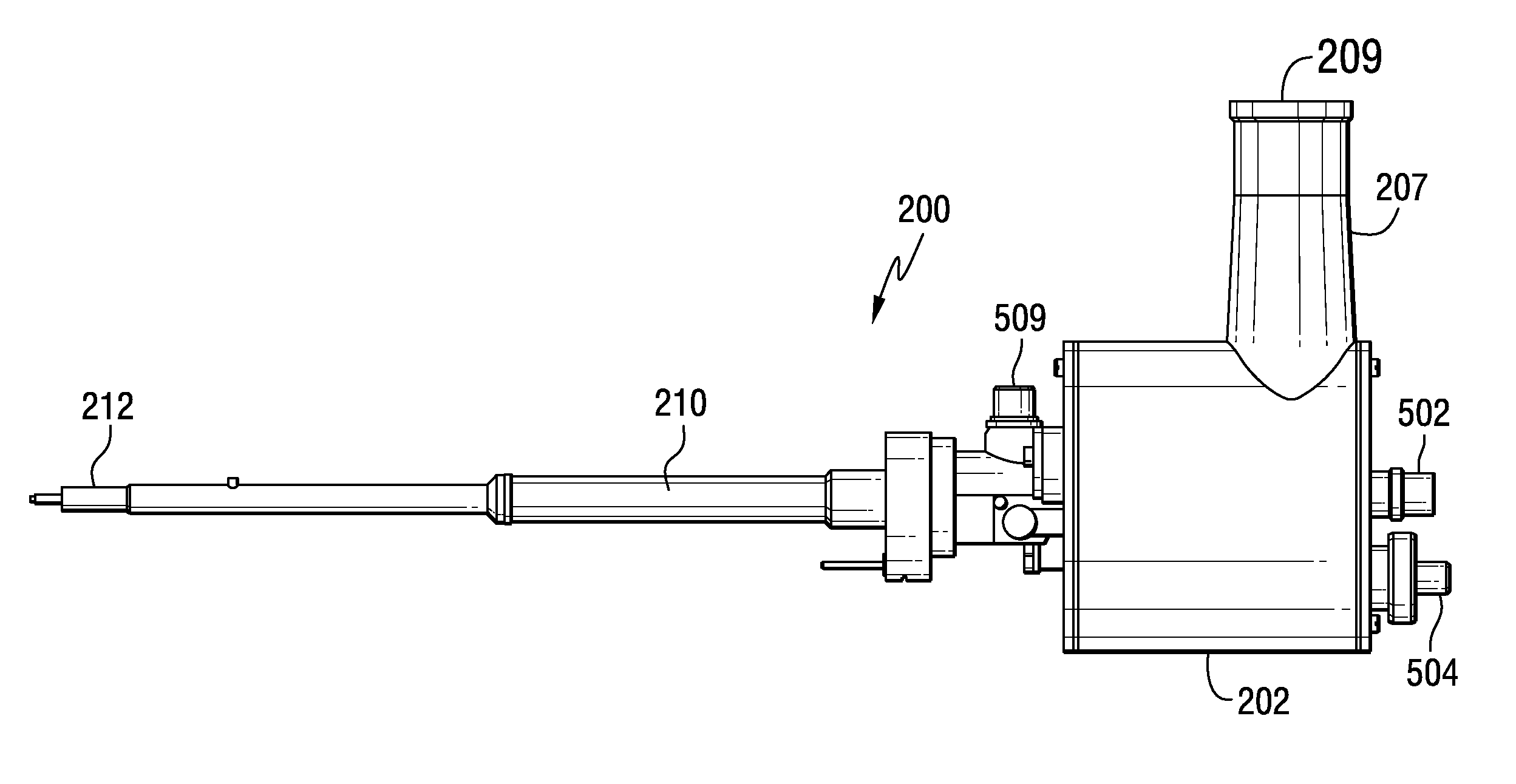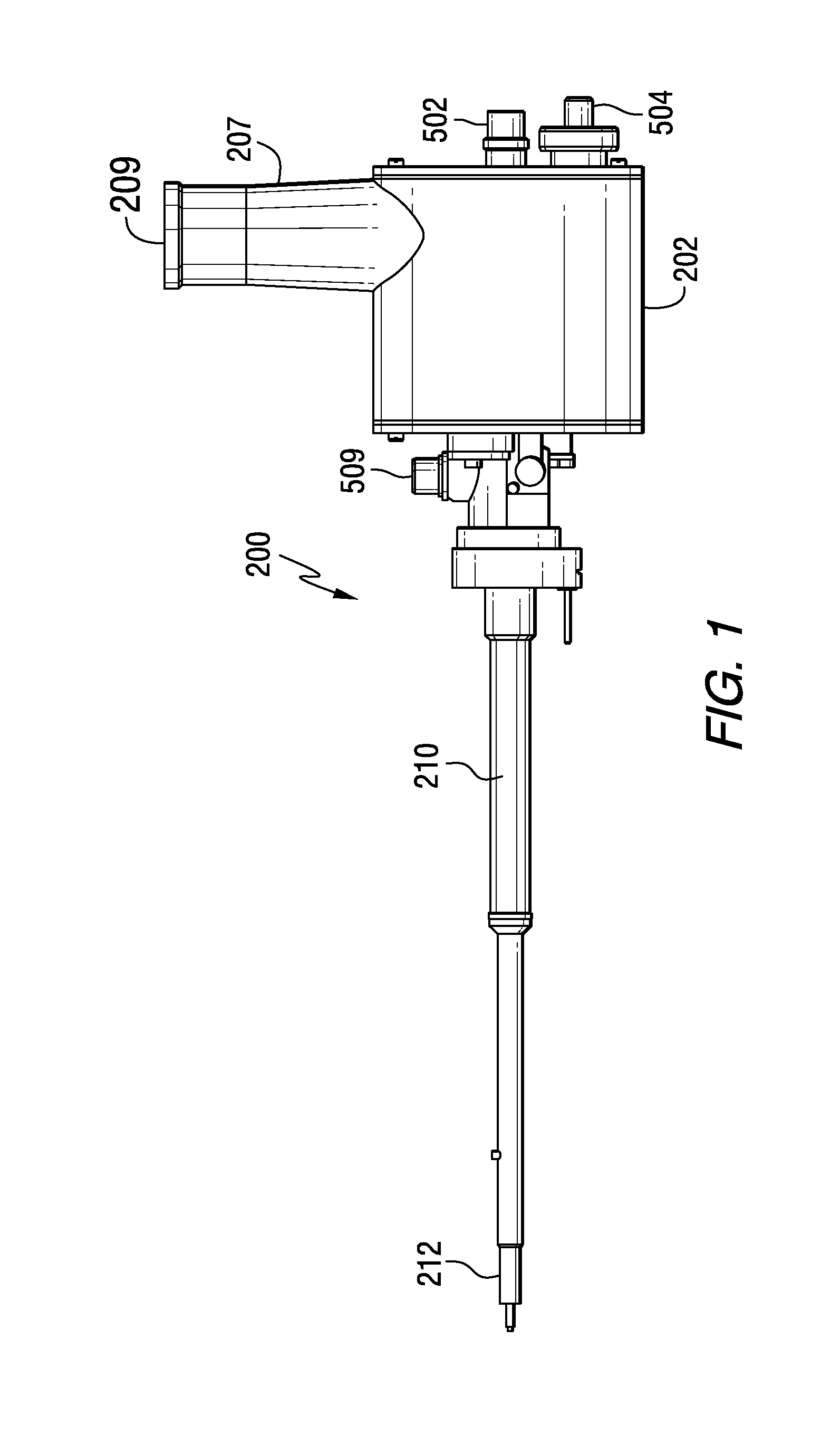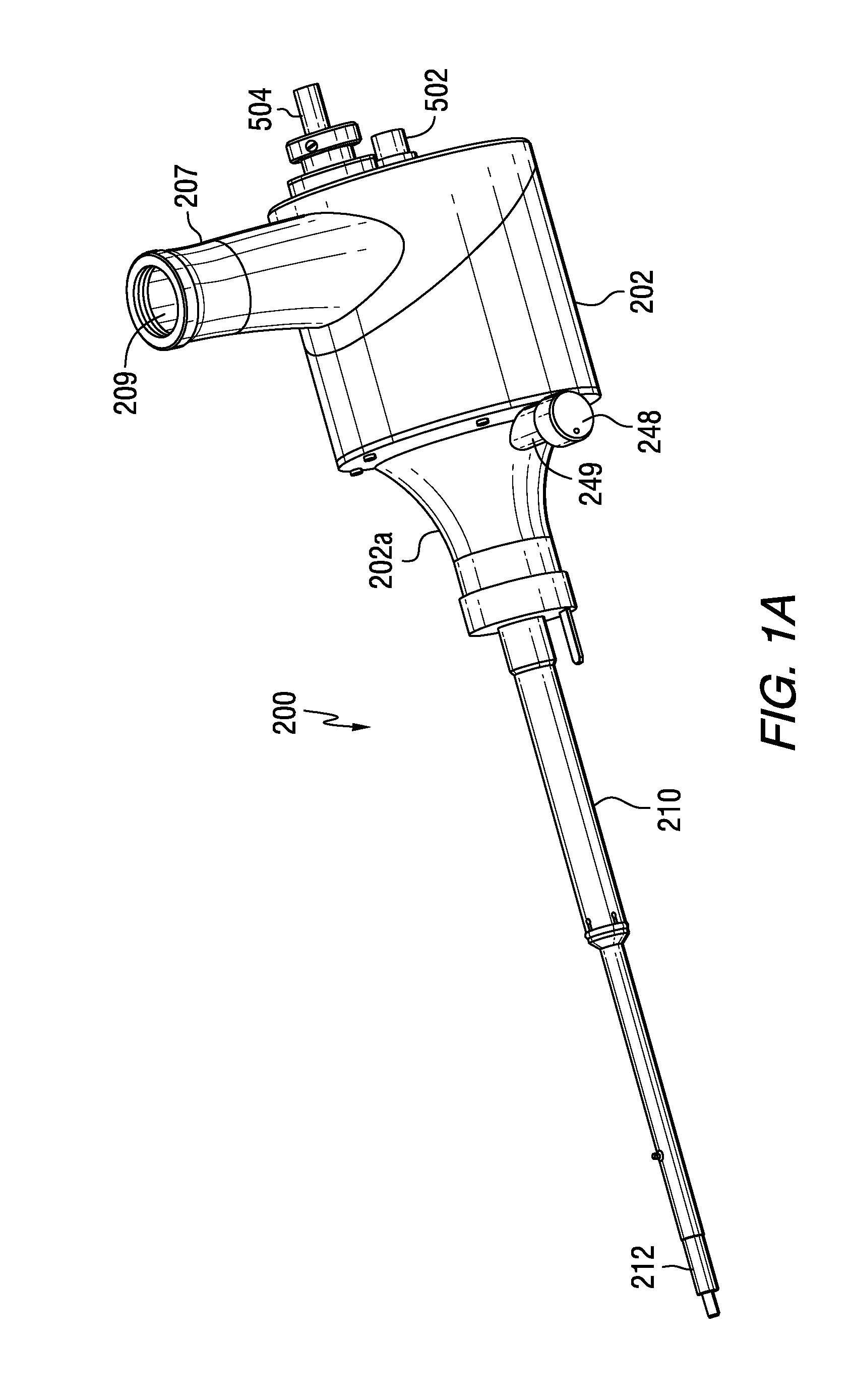Cryogenic specimen holder
a specimen holder and cryogenic technology, applied in the field of cryogenic specimen holders, can solve the problems of affecting imaging and analysis, introducing physical stresses on the device, and vibrations formed by turbulence in the medium, so as to improve imaging and analytical information quality, enhance specimen cooling, and reduce volume
- Summary
- Abstract
- Description
- Claims
- Application Information
AI Technical Summary
Benefits of technology
Problems solved by technology
Method used
Image
Examples
second embodiment
[0046]Referring again to FIG. 2a, conductor rod 505 and conductor conduit are received and supported by bellows assembly 511. Bellows assembly 511 is a flexible, insulating assembly for structurally supporting, at the tip end 508a, the Dewar end of conductor conduit 505a, and at the support end 508b, the dewar end of conductor rod 505 within barrels 210, 212. Additionally, bellows assembly 511 is intended to separate evacuated space 211 from the remainder of the holder. Evacuated space 211 includes a vacuum controlled by the user through valve 504. Barrels 210, 212 are alternatively vented to ambient pressure while the holder is not in use, with the interior space of barrels 210, 212 being evacuated by the microscope pumping mechanism while inserted in the goniometer and in use.
[0047]Referring now to FIGS. 4a-4e, front barrel 212 is provided with an independent front insulating tube 258 which is spatially isolated from front barrel 212, preferably constructed of a non-magnetic nicke...
first embodiment
[0053]With additional reference to FIGS. 2, 3 and 3a, actuation assembly 249 is affixed to the end of actuator rod 240 proximate to the housing 202. Actuator rod 240, which may be optionally comprised of several components or modules interconnected with each other, extends within the interior space of middle barrel 210 and front barrel 212 to terminate with actuator pin 242 at the operative end of the device in order to displace specimen cartridge 232. As will be appreciated by those skilled in the art, such displacement may be in any direction or dimension. Specimen cartridge 232 is adapted for slidable displacement in a lateral direction in and out of cartridge housing 506 when a lateral force is applied to the actuator rod 240 by turning rotational knob 248. Knob 248 is affixed to actuator shaft 252 which is rotatably mounted within handle 249. O-ring seal 251 is utilized to separate the interior of the holder assembly 200, which may be under vacuum conditions, from the ambient a...
third embodiment
[0055]In actuator assembly 249, as illustrated in FIGS. 2b-2d and 3c, actuation assembly 249 is affixed to the end of conductor rod 505 proximate to the housing 202. Knob 248 is affixed to actuator shaft 252 which is rotatably mounted. O-ring seal 251′ is utilized to separate the interior of the holder assembly 200, which may be under vacuum conditions, from the ambient atmosphere. It is noted that actuator shaft 252 is rotated to engage and adjust pinion gear 1001 with respect to rack gear 1004 and that the rotational motion of knob 248 causes lateral displacement of rack gear 1004, conductor rod 505 and conductor isolation rod 238c, which is affixed to rack gear 1004 by clamp 1005. Conductor rod 505 is slidingly supported and thermally isolated by conductor isolation rod 238c. O-ring 1003 provides a sealing interface between the interior of actuation housing 1002 and the interior of holder 200. The interior of actuation housing 1002 is evacuated by the TEM device, while the interi...
PUM
 Login to View More
Login to View More Abstract
Description
Claims
Application Information
 Login to View More
Login to View More - R&D
- Intellectual Property
- Life Sciences
- Materials
- Tech Scout
- Unparalleled Data Quality
- Higher Quality Content
- 60% Fewer Hallucinations
Browse by: Latest US Patents, China's latest patents, Technical Efficacy Thesaurus, Application Domain, Technology Topic, Popular Technical Reports.
© 2025 PatSnap. All rights reserved.Legal|Privacy policy|Modern Slavery Act Transparency Statement|Sitemap|About US| Contact US: help@patsnap.com



